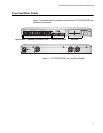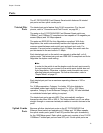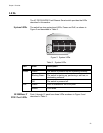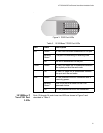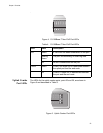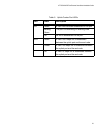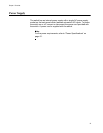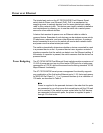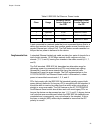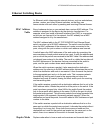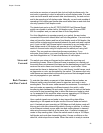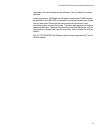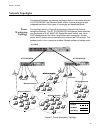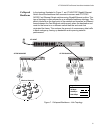
AT-FS750/24POE Fast Ethernet Smart Switch Installation Guide
25
Power over Ethernet
The twisted pair ports on the AT-FS750/24POE Fast Ethernet Smart
switch feature Power over Ethernet (PoE). PoE is a mechanism for
supplying power to network devices over the same twisted pair cables
used to carry network traffic. This feature can simplify network installation
and maintenance by allowing you to use the switch as a central power
source for other network devices.
A device that receives its power over an Ethernet cable is called a
powered device. Examples of such devices can be wireless access points,
IP telephones, webcams, and even other Ethernet switches. A powered
device connected to a port on the switch will receive both network traffic
and power over the same twisted pair cable.
The switch automatically determines whether a device connected to a port
is a powered device or not. A powered device has a signature resistor or
signature capacitor that the switch can detect over the Ethernet cabling. If
the resistor or capacitor is present, the switch assumes that the device is a
powered device.
Power Budgeting The AT-FS750/24POE Fast Ethernet Smart switch provides a maximum of
15.4 W of power per port on six of the twelve POE ports for a total power
consumption of 100 W, while at the same time furnishing standard 10/100
Mbps Ethernet functionality.
The AT-FS750/24POE smart power management functionality supports
any combination of the first twelve Ethernet ports (1-12) that supply power
for IEEE 802.3af Class 0, 1, 2, or 3 powered devices up to a maximum of
100 watts, as described in Table 6.
Note
Power is supplied to the powered devices in the order that the ports
are connected or on a first-come-first-served basis until the 100 watt
limit is reached. If the switch is power cycled after the PoE devices
are connected to the switch ports, the power is supplied to ports 1
through 12 in that order.



